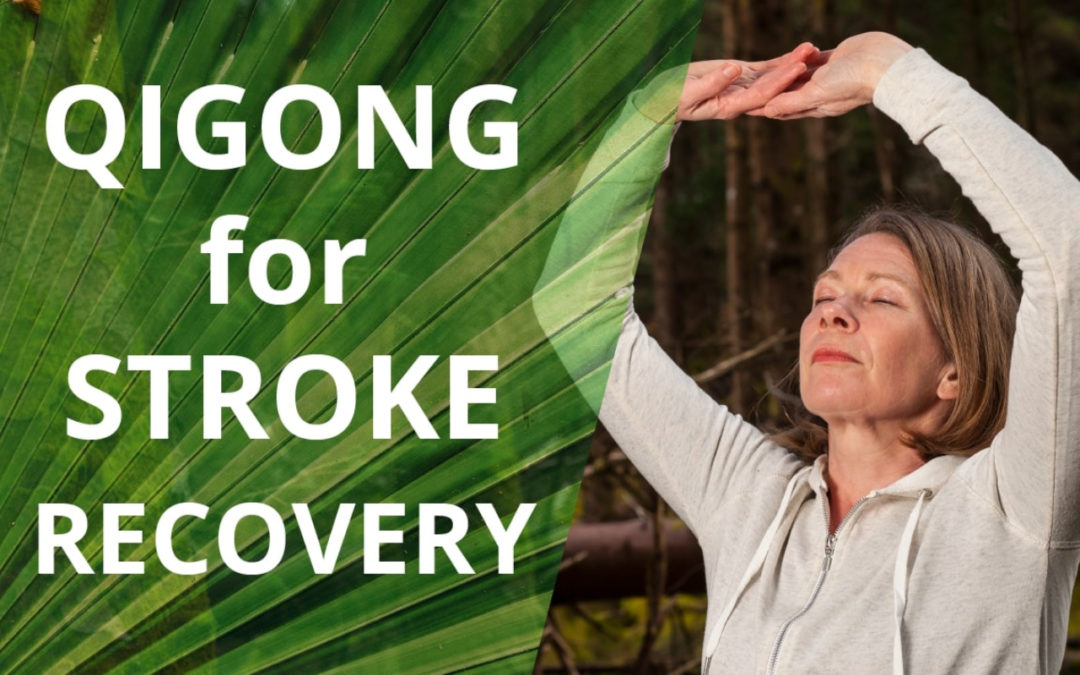A stroke occurs when a blood vessel, which is carrying oxygen and nutrients to the brain, bursts or is blocked by a clot. This causes an interruption of the blood supply to part of the brain. This can damage or destroy brain cells which will affect body functions. For example, if a stroke damages the part of your brain that controls limb movement, your ability to move an arm or leg may be affected. A stroke can also affect mental processes such as how people feel, think, communicate, or learn. In the video on this page you’ll learn some methods of Qigong for stroke recovery. These exercises can speed up the recovery process, regardless of how long ago the stroke occurred.
Janice Tucker is a practitioner of Traditional Chinese Medicine and Medical Qigong. She is also the founder of the Space To Relax online programme of Qigong video lessons.
Please head over to YouTube to subscribe to my YouTube channel by clicking the red “Subscribe” button. That way you won’t miss my regular videos which are full of useful health enhancing tips. These videos will help you to enhance your health and prevent illness from arising in the first place. Also please give this video a “Like” if you found it informative.
5 Reasons Why – Qigong For Stroke Recovery?
- As I explained above, if you have a stroke, your brain is affected. Qigong helps you to form new connections in your brain as the movements involved are ones which your body isn’t used to carrying out. These new movements promote new brain connections.
- Qigong involves repetitive movements which help you to reinforce the new neurological connections in your brain. Repetition is the key here. The more repetition, the more stable these new connections become.
- Qigong is free and easily accessible. Unlike attending the gym, physiotherapist or swimming to help with recovery from stroke, Qigong methods, once you have learned them, can be performed in the comfort of your home for no cost. Other methods to help recovery may incur a cost or visit to a special facility which is not always practical. You can also practice Qigong from a standing, sitting or lying down position. Because of this you can easily adapt Qigong methods to suit your individual range of movement following a stroke.
- Qigong exercises can easily be integrated into your daily activities. This makes the repetition aspect easy to carry out as you can practice Qigong when you are standing in a queue, walking, driving, standing, reaching for things, etc.
- Qigong helps balance the whole body. Working from a whole body perspective is very important subsequent to a stroke as this means that the parts of your body which may have been weakened by the stroke can be assisted by the stronger parts.
Where Can I Learn Qigong for Stroke Recovery?
If you would like to learn some Qigong for stroke recovery then there are a number of things you can do:
- Head over to my Space To Relax homepage. There you can sign up for a free 3 part video series of Qigong lessons. Next you’ll have the opportunity to join my Space To Relax online membership programme of Qigong video lessons. This will allow you to take your practice to a whole new level where you will learn many exercises to eliminate health issues before they become a major problem. I’ll guide you step by step through many more effective Qigong methods, all which can be adapted for stroke recovery.
- Subscribe to my YouTube channel by clicking the red “Subscribe” button. That way you won’t miss my regular videos which are full of useful health enhancing tips. Also please give this video a “Like” and share with me in the comments box what you learned from this video.
- Join my free Facebook group, “Space To Relax Free Qigong Group” and leave any comments or questions for me there. I’ll be happy to answer them. Also, by joining this group, you will receive regular posts of Qigong articles and videos with tips about how to use Qigong to improve your state of health.


